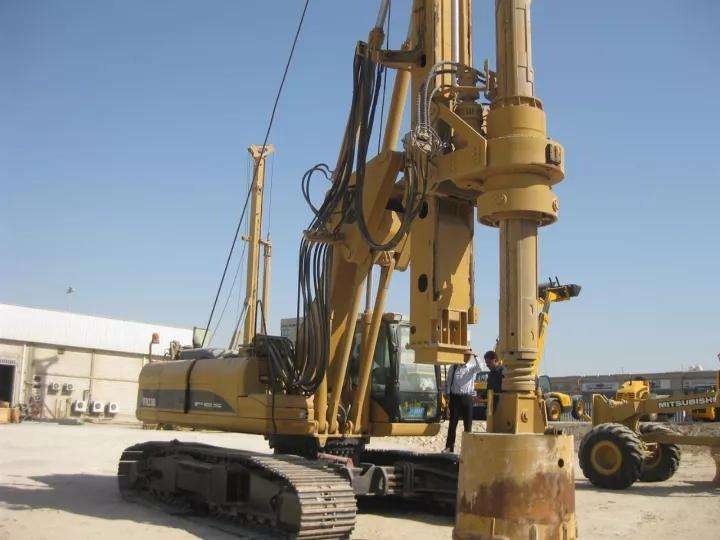Significance and Function of Reverse Circulation Technology in Bored Piles drilling
Positive circulation: The mud is fed into the drill pipe by the mud pump, and the drilling slag rises along the hole wall with the mud and overflows from the orifice into the mud pool.
Reverse circulation: The mud enters from the orifice, and the mud is sucked by means of pump suction and gas lift.
A cast-in-place pile is a pile made of concrete or reinforced concrete in place. Commonly used are:
(1) Bored cast-in-place piles: use auger drilling rigs, submersible drilling rigs, etc. to form holes with concrete to form piles. There is no vibration or soil squeeze during construction, but the settlement of the piles is slightly larger. The auger rig is suitable for clay soil, sandy soil and artificial fill above the groundwater level. The drilled soil blocks rise along the spiral blades on the drill pipe and are discharged out of the hole. The hole diameter is about 300mm, and the drilling depth is 8-12m. Soil quality and moisture content select drill pipe.
Submersible drilling rigs are suitable for clay, sand, silt and silty soils, etc., and are especially suitable for forming holes in soil layers with high groundwater levels. When drilling, use mud to protect the wall to prevent the hole from collapsing. Drilling with water in clay, self-made mud wall; in sandy soil, the prepared mud should be injected for drilling. Use mud circulation to remove the soil cuttings under drilling, and clear the hole after drilling to the required depth to remove the soil cuttings settled at the bottom of the hole and reduce the settlement of the pile.
(2) Immersed pipe cast-in-place pile: The steel pipe with reinforced concrete pile shoe (pile tip) or valve type pile shoe is sunk into the soil by hammering or vibration, and then poured concrete and extubated to form a pile.
Those who use the hammer to sink the tube and extubate the tube are called hammering cast-in-place piles; those who use the vibration exciter to sink the tube and extubate the tube are called vibrating cast-in-place piles. This method is prone to breakage, necking, hanging piles, water and mud in the pile boots, etc., pay attention to inspection and timely treatment during construction. In addition, there are blast-expanded cast-in-place piles that use explosives to form an enlarged head at the bottom of the pile hole to increase the bearing capacity.
Reverse-circulation rotary drilling to form a hole is driven by the rotary device of the drilling rig to drive the drill pipe and the drill bit to rotate and cut the rock and soil, and use pumping, gas lift, jetting and other measures to suck the circulating wall mud, and the drilling slag is sucked out of the hole from the inner cavity of the drill pipe. external pore-forming methods.
According to different suction principles, it can be divided into pump suction reverse circulation, gas lift reverse circulation and jet (jet) reverse circulation. Reverse circulation; jet reverse circulation is to use the high-speed water flow set by the jet pump to generate negative pressure to make the water flow in the drill pipe rise and reverse the stroke.
The gas lift reverse circulation is to use the compressed air to circulate the water. The rising speed of the water flow in the drill pipe is related to the difference in the weight of the liquid column inside and outside the drill pipe, and the efficiency increases with the increase of the hole depth. When the hole depth is less than 50m, pump suction or jet reverse circulation should be used; when the hole depth is greater than 50m, gas lift reverse circulation should be used.





